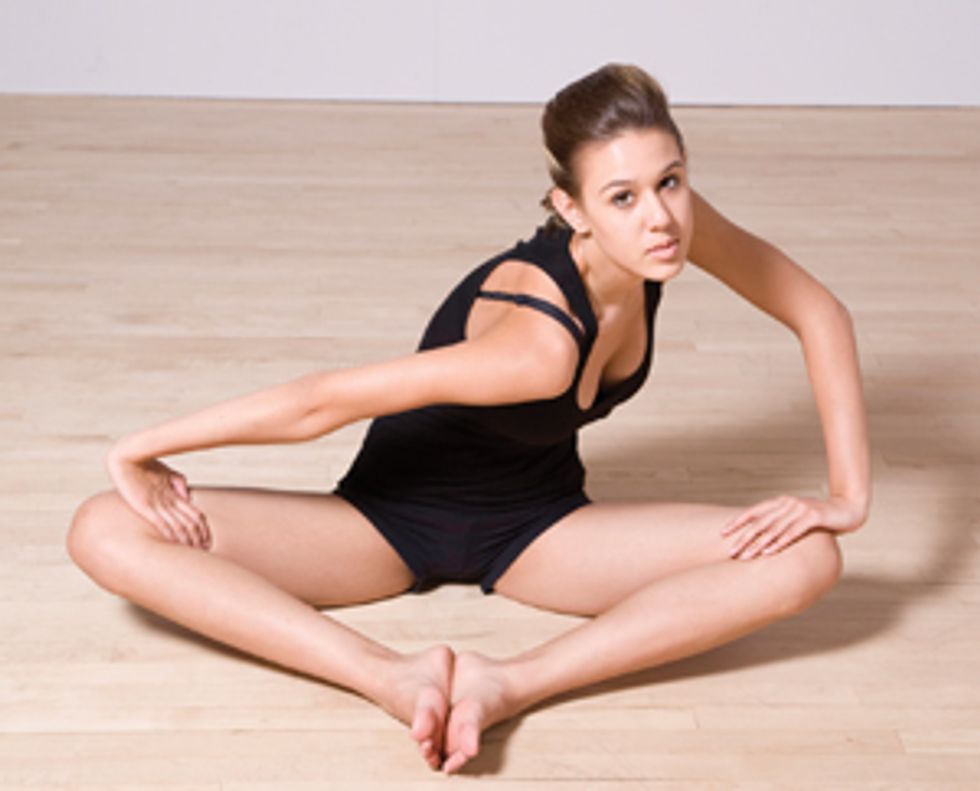Snap, Crackle, Pop!

Ever notice it often sounds like someone’s popping bubble wrap at the start of a ballet class? Knees click and ankles crack as dancers warm up their bodies and work out the kinks. Some people pair up with friends to adjust each other’s backs while others feel like they have to pop their hips before doing a battement.
There’s no doubt about it: Dancers love to pop! Whether your body cracks on its own or you need to tug and twist to get an oh-so-good release, you probably look forward to hearing that sweet sound several times a day. But is cracking safe for you? DS checked with the experts to find out.
What makes the “pop”?
The cracking sound happens for a variety of reasons. The current belief is that most of the time, it’s air being released from a contained space. “When you crack a joint, you take it to the end range of motion,” explains Dr. Lenny Stein, a sports chiropractor and dance medicine specialist. “It creates a little bit of stretch on the joint capsule, which then releases gas to produce the popping sound.” You’re not feeling a need to pop so much as a need to find mobility or articulation within a joint.
You can also think of it like opening a bottle of soda. Once you twist off the cap, it won’t fizz again right away. But close the bottle and leave it for a while, and it’ll fizz when you open it again. “It takes time for this gas to build up again within the joint,” says Dr. Lawrence E. DeMann Jr., a chiropractor who works with New York City Ballet dancers. “It usually takes 30 minutes or longer.”
Some joints, like knees, crack due to a cartilage irregularity. Cartilage isn’t always smooth—it can have bumps and divots that catch when the joint moves, similar to a car tire that rolls from a smooth area to a grooved highway. In the hips, popping can also happen as the hip flexor or tendon slides over a bursa, a fluid-filled sac that helps with mobility.
What’s safe and what’s not safe?
Repetitive cracking isn’t a bad thing to do, so don’t believe your grandmother when she tells you it’ll cause arthritis. “There was a scientific study done on people who crack their knuckles on a regular basis,” says Stein, “and their joints are the same as or healthier than those of people who don’t.” Cracking your joints using a natural range of motion, without any rough yanking or tugging, is safe and won’t cause you any long-term problems.
Think twice, though, before you ask a friend for help. “When you twist and turn to get a pop, that’s OK,” DeMann says. “When a friend helps you do it, you lose the sense of how far you should go. That’s when you can get into trouble.” Having someone who’s not a professional try to adjust your lower back or neck, for example, is very risky and can result in temporary injuries.
Dr. Marc Harwood, a sports medicine physician at the Rothman Institute in Philadelphia, says you shouldn’t be concerned about popping unless it’s painful. “Dancers know their bodies better than anyone,” he says. “If something doesn’t feel right, get evaluated. Pain is a big thing to look out for, especially if something is louder or happens at a different point in a range of motion—any change from baseline.” Younger dancers should be extra careful because their bones and joints haven’t fully formed.
But if you’re cracking because it makes you feel good and loose, have at it! Just make sure it’s within your natural range of motion. Animals, like cats and dogs, actually do it all the time. “They’ll stretch out and go to their very end range and open their joints out,” Stein says. “It’s a natural, safe process.”




